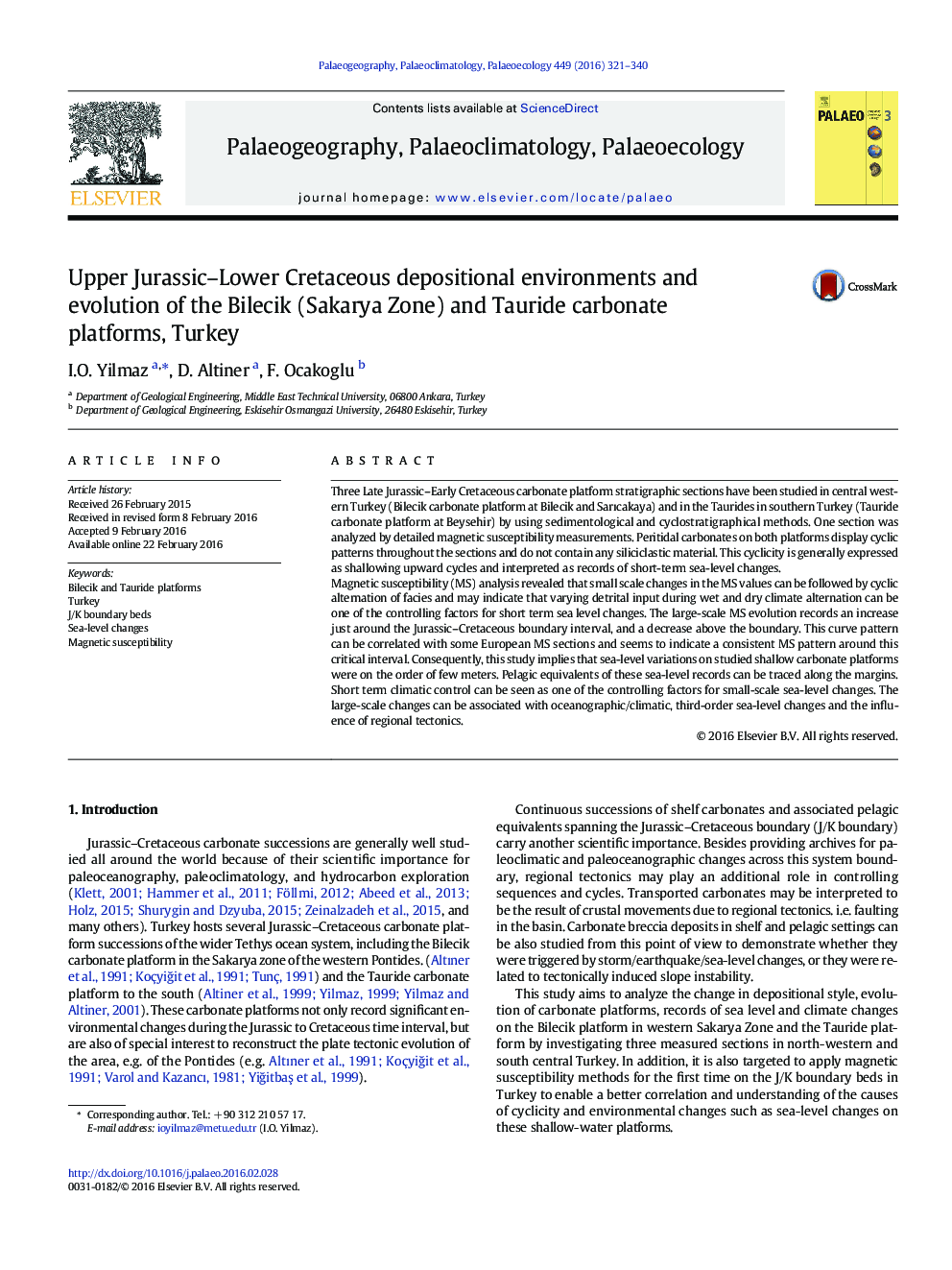| Article ID | Journal | Published Year | Pages | File Type |
|---|---|---|---|---|
| 4465770 | Palaeogeography, Palaeoclimatology, Palaeoecology | 2016 | 20 Pages |
•The carbonates of the Bilecik and Tauride platforms have been studied in detail.•J/C boundary beds have been analyzed by cyclostratigraphy on both platforms.•J/C boundary beds can be traced in both pelagics and platform carbonates in Bilecik.•Magnetic susceptibility (MS) and cyclostratigraphy displayed parallel variations.•MS graphics on the J/C boundary beds can be correlated with European successions.
Three Late Jurassic–Early Cretaceous carbonate platform stratigraphic sections have been studied in central western Turkey (Bilecik carbonate platform at Bilecik and Sarıcakaya) and in the Taurides in southern Turkey (Tauride carbonate platform at Beysehir) by using sedimentological and cyclostratigraphical methods. One section was analyzed by detailed magnetic susceptibility measurements. Peritidal carbonates on both platforms display cyclic patterns throughout the sections and do not contain any siliciclastic material. This cyclicity is generally expressed as shallowing upward cycles and interpreted as records of short-term sea-level changes.Magnetic susceptibility (MS) analysis revealed that small scale changes in the MS values can be followed by cyclic alternation of facies and may indicate that varying detrital input during wet and dry climate alternation can be one of the controlling factors for short term sea level changes. The large-scale MS evolution records an increase just around the Jurassic–Cretaceous boundary interval, and a decrease above the boundary. This curve pattern can be correlated with some European MS sections and seems to indicate a consistent MS pattern around this critical interval. Consequently, this study implies that sea-level variations on studied shallow carbonate platforms were on the order of few meters. Pelagic equivalents of these sea-level records can be traced along the margins. Short term climatic control can be seen as one of the controlling factors for small-scale sea-level changes. The large-scale changes can be associated with oceanographic/climatic, third-order sea-level changes and the influence of regional tectonics.
Graphical abstractFigure optionsDownload full-size imageDownload high-quality image (195 K)Download as PowerPoint slide
